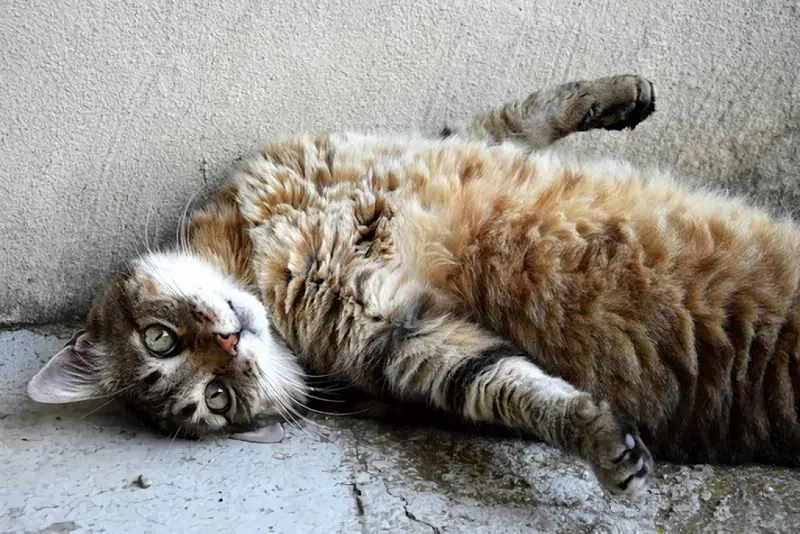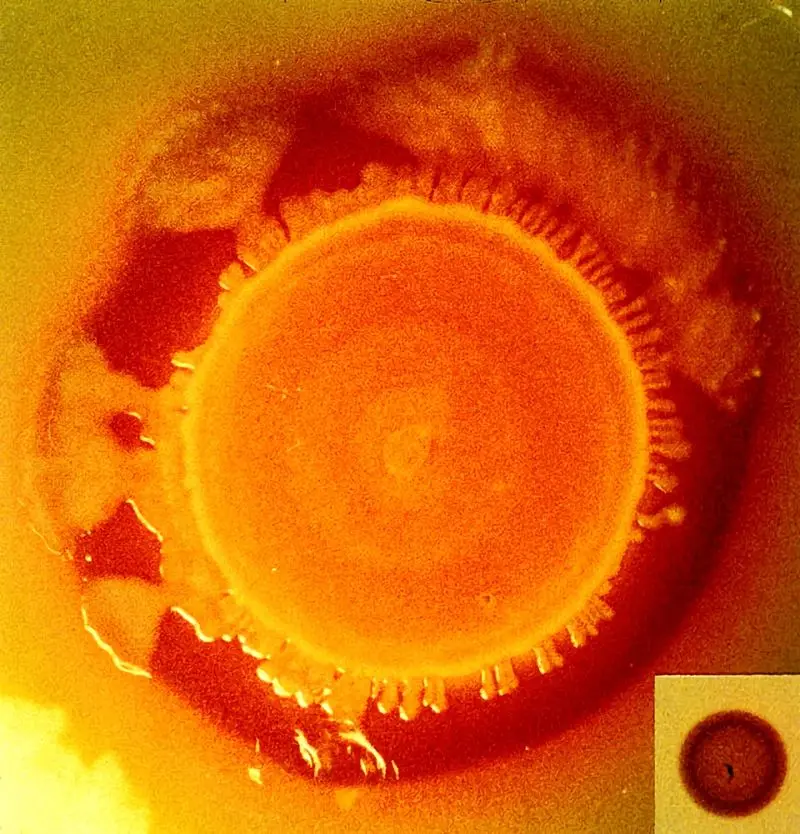 ↪ Doses - FLUCYTOSINE
Chemistry - A fluorinated pyrimidine antifungal agent, flucytosine occurs as a white to off-white, crystalline powder that is odorless or has a slight odor with pKas of 2.9 and 10.71. It is sparinglysoluble in water and slightly soluble in alcohol. Flucytosine may also... ↪ Read more
↪ Doses - FLUCYTOSINE
Chemistry - A fluorinated pyrimidine antifungal agent, flucytosine occurs as a white to off-white, crystalline powder that is odorless or has a slight odor with pKas of 2.9 and 10.71. It is sparinglysoluble in water and slightly soluble in alcohol. Flucytosine may also... ↪ Read more Veterinary Drug Handbook (VDH) is the reference veterinarians turn to when they want an independent source of information on the drugs that are used in veterinary medicine today.
-
 Is veterinary Liniment Gel safe for humans?
Is veterinary Liniment Gel safe for humans? -
 Giving Your Cat A Pill
Giving Your Cat A Pill -
 Dog Aggression
Dog Aggression -
 Dogs May Help Boost Infant Health
Dogs May Help Boost Infant Health -
 Animal-Assisted Therapy, Veterinary Social Work, & Social Work With People & Pets in Crisis
Animal-Assisted Therapy, Veterinary Social Work, & Social Work With People & Pets in Crisis -
 On-demand veterinary service gives advice on poorly pets
On-demand veterinary service gives advice on poorly pets -
 Should we stop throwing sticks for dogs?
Should we stop throwing sticks for dogs? -
 What does PU/PD mean in veterinary medicine?
What does PU/PD mean in veterinary medicine? -
 Can breathing in cat hair be harmful?
Can breathing in cat hair be harmful? -
 Bill calls for ban on sales of dogs, cats in Maine pet stores
Bill calls for ban on sales of dogs, cats in Maine pet stores -
 Common Meanings Of Cat Behavior
Common Meanings Of Cat Behavior -
 What does DVM stand for in veterinary?
What does DVM stand for in veterinary? -
 Curing Bad Cat Breath
Curing Bad Cat Breath -
 New Tracking Tool for Pathogen Investigators
New Tracking Tool for Pathogen Investigators -
Can binturongs be kept as pets?
-
 How long do instruments stay sterile after autoclaving veterinary?
How long do instruments stay sterile after autoclaving veterinary?
FLUCYTOSINE
 ↪ Doses - FLUCYTOSINE
Chemistry - A fluorinated pyrimidine antifungal agent, flucytosine occurs as a white to off-white, crystalline powder that is odorless or has a slight odor with pKas of 2.9 and 10.71. It is sparinglysoluble in water and slightly soluble in alcohol. Flucytosine may also... ↪ Read more
↪ Doses - FLUCYTOSINE
Chemistry - A fluorinated pyrimidine antifungal agent, flucytosine occurs as a white to off-white, crystalline powder that is odorless or has a slight odor with pKas of 2.9 and 10.71. It is sparinglysoluble in water and slightly soluble in alcohol. Flucytosine may also... ↪ Read more Doses - FLUCONAZOLE
 ↪ Description - FLUCONAZOLE
Dogs: a) For susceptible fungal infections: 2.5 - 5 mg/kg PO once daily for 8-12 weeks (Forneyand Allen 1992) Cats: For Cryptococcus, urinary tract or CNS mycoses: 2.5 - 10 mg/kg PO q12h (Wolf 1994) For cryptococcosis: 50 mg PO twice daily. Treatment should... ↪ Read more
↪ Description - FLUCONAZOLE
Dogs: a) For susceptible fungal infections: 2.5 - 5 mg/kg PO once daily for 8-12 weeks (Forneyand Allen 1992) Cats: For Cryptococcus, urinary tract or CNS mycoses: 2.5 - 10 mg/kg PO q12h (Wolf 1994) For cryptococcosis: 50 mg PO twice daily. Treatment should... ↪ Read more FLUCONAZOLE
 ↪ Doses - FLUCONAZOLE
Chemistry - A synthetic triazole antifungal agent, fluconazole occurs as a white crystalline powder. It is slightly soluble (8 mg/ml) in water.Storage, Stability, Compatibility Fluconazole tablets should be stored at temperatures less than30°C in tight containers.... ↪ Read more
↪ Doses - FLUCONAZOLE
Chemistry - A synthetic triazole antifungal agent, fluconazole occurs as a white crystalline powder. It is slightly soluble (8 mg/ml) in water.Storage, Stability, Compatibility Fluconazole tablets should be stored at temperatures less than30°C in tight containers.... ↪ Read more Doses - FLORFENICOL
 ↪ Description - FLORFENICOL
Cattle: For treatment of BRD: a) 20 mg/kg IM (in neck muscle only); repeat in 48 hours. Alternatively, a single 40 mg/kg SubQ dose (in neck) may be used. Note: 20 mg/kg equates to 3 ml of the injection per100 lb. of body weight. Do not exceed 10 ml per injection... ↪ Read more
↪ Description - FLORFENICOL
Cattle: For treatment of BRD: a) 20 mg/kg IM (in neck muscle only); repeat in 48 hours. Alternatively, a single 40 mg/kg SubQ dose (in neck) may be used. Note: 20 mg/kg equates to 3 ml of the injection per100 lb. of body weight. Do not exceed 10 ml per injection... ↪ Read more FLORFENICOL
 ↪ Doses - FLORFENICOL
Chemistry/Storage, Stability, Compatibility A fluorinated analog of thiamphenicol, florfenicol is commercially available as light yellow to straw-colored injectable solution also containing nethyl-2-pyrolidone, propylene glycol and polyethylene glycol. It should be... ↪ Read more
↪ Doses - FLORFENICOL
Chemistry/Storage, Stability, Compatibility A fluorinated analog of thiamphenicol, florfenicol is commercially available as light yellow to straw-colored injectable solution also containing nethyl-2-pyrolidone, propylene glycol and polyethylene glycol. It should be... ↪ Read more Doses - FIPRONIL
 ↪ Description - FIPRONIL
Note: Refer to the package information for specific instructions on application of fipronilproducts.Dogs: For areas where high risk of infestation, if dog allergic to fleas or where tick control isneeded: Apply Frontline® Top Spot once a month. For areas with... ↪ Read more
↪ Description - FIPRONIL
Note: Refer to the package information for specific instructions on application of fipronilproducts.Dogs: For areas where high risk of infestation, if dog allergic to fleas or where tick control isneeded: Apply Frontline® Top Spot once a month. For areas with... ↪ Read more FIPRONIL
 ↪ Doses - FIPRONIL
Chemistry/Storage, Stability, Compatibility Fipronil is a phenylpyrazole antiparasitic agent. The commercially available topical products should be stored at room temperature, unless otherwisedirected by the manufacturer. Commercially available solutions are flammable;... ↪ Read more
↪ Doses - FIPRONIL
Chemistry/Storage, Stability, Compatibility Fipronil is a phenylpyrazole antiparasitic agent. The commercially available topical products should be stored at room temperature, unless otherwisedirected by the manufacturer. Commercially available solutions are flammable;... ↪ Read more Doses - FINASTERIDE
 ↪ Description - FINASTERIDE
Dogs: For benign prostatic hyperplasia: a) 5 mg PO once daily; preliminary results. Lower doses may be effective, but dose response studies have not been reported. (Klausner, Bell et al. 1994) Monitoring Parameters - Efficacy: Prostate exam Client Information -... ↪ Read more
↪ Description - FINASTERIDE
Dogs: For benign prostatic hyperplasia: a) 5 mg PO once daily; preliminary results. Lower doses may be effective, but dose response studies have not been reported. (Klausner, Bell et al. 1994) Monitoring Parameters - Efficacy: Prostate exam Client Information -... ↪ Read more FINASTERIDE
 ↪ Doses - FINASTERIDE
Chemistry - Finasteride is a 4-azasteroid synthetic drug that inhibits 5 alpha-dihydroreductase(DH) and has a molecular weight of 372.55.Storage, Stability, Compatibility Store tablets below 30°C in tight containers and protectedfrom light.Pharmacology -... ↪ Read more
↪ Doses - FINASTERIDE
Chemistry - Finasteride is a 4-azasteroid synthetic drug that inhibits 5 alpha-dihydroreductase(DH) and has a molecular weight of 372.55.Storage, Stability, Compatibility Store tablets below 30°C in tight containers and protectedfrom light.Pharmacology -... ↪ Read more Doses - FERROUS SULFATE
 ↪ Description - FERROUS SULFATE
Caution: Unless otherwise noted, doses are for ferrous sulfate (regular¯not dried). Dosing of oral iron products can be confusing; some authors state doses in terms of the iron saltand some state doses in terms of elemental iron. For the doses below,... ↪ Read more
↪ Description - FERROUS SULFATE
Caution: Unless otherwise noted, doses are for ferrous sulfate (regular¯not dried). Dosing of oral iron products can be confusing; some authors state doses in terms of the iron saltand some state doses in terms of elemental iron. For the doses below,... ↪ Read more FERROUS SULFATE
 ↪ Doses - FERROUS SULFATE
Chemistry - An orally available iron supplement, ferrous sulfate occurs as odorless, pale-bluish-green, crystals or granules having a saline, styptic taste. In dry air the drug is efflorescent. If exposed to moisture or moist air, the drug is rapidly oxidized to a... ↪ Read more
↪ Doses - FERROUS SULFATE
Chemistry - An orally available iron supplement, ferrous sulfate occurs as odorless, pale-bluish-green, crystals or granules having a saline, styptic taste. In dry air the drug is efflorescent. If exposed to moisture or moist air, the drug is rapidly oxidized to a... ↪ Read more Doses - FENTHION
 ↪ Description - FENTHION
Dogs: a) Read and follow directions for Pro-Spot®; Weigh animals prior to dosing. Be certain ofthe dose and the product you are using (there are two Pro-Spot® concentrations and fiveseparate products available¯see below). The labeled dose is: 4 - 8... ↪ Read more
↪ Description - FENTHION
Dogs: a) Read and follow directions for Pro-Spot®; Weigh animals prior to dosing. Be certain ofthe dose and the product you are using (there are two Pro-Spot® concentrations and fiveseparate products available¯see below). The labeled dose is: 4 - 8... ↪ Read more Popular Diagnoses
Packed cell volume (PCV, hematocrit) Reflex ovulator Mucolytic Microfilaricide Bronchodilator Hematocrit Glucocorticoid Monoamine oxidase inhibitor (MAOI) ↪ All veterinary diagnoseOther Diagnoses
Antitussive Anuria Aplastic anemia Aqueous humor Arrhythmia Ascarid Ascites AspiratePopular Veterinary Clinics
VCA Welborn Animal Hospital, 7860 Washington Avenue Kansas City, KS 66112 USA MedVet Columbus, 300 East Wilson Bridge Road, Worthington, OH Rutland Veterinary Clinic & Surgical Center, 90 East Pittsford Road, Rutland, VT VCA Paradise Valley Emergency Animal Hospital, 6969 East Shea Boulevard Suite 150 Scottsdale, AZ 85254 USA Connecticut Veterinary Center & Pet ER, 470 Oakwood Ave West Hartford, CT 06110 USA Norway Veterinary Hospital, 10 Main St P.O. Box 273 Norway, ME 04268 USA Craig Road Animal Hospital, 5051 West Craig Road, Las Vegas, NV Abri Veterinary Hospital Inc, 1449 Trademart Boulevard Winston-Salem, NC 27127 USA ↪ All veterinary clinicsOther Veterinary Clinics
Beach Pet Hospital, 316 North Great Neck Road, Virginia Beach General Booth Veterinary Hospital, 2209 Princess Anne Rd. Virginia Beach, VA 23456 USA Hope Springs Veterinary at Pembroke, 4548 Wishart Road Virginia Beach, VA 23455 USA Pet Care Veterinary Hospital, 5201 Virginia Beach Blvd Virginia Beach, VA 23462 USA Bostic Veterinary Hospital, 5269 CHALLEDON DRIVE VIRGINIA BEACH, VA 23462 USA VCA Todds Lane Animal Hospital, 1309 Todds Lane Hampton, VA 23666-1930 USA Warwick Animal Hospital, 11117 Jefferson Avenue Newport News, VA 23601 USA Pine Meadow Veterinary Hospital PC, 1403 George Washington Memorial Highway Yorktown, VA 23693 USAPopular Drugs
DOXYLAMINE SUCCINATE Doses - PENICILLIN V POTASSIUM Doses - METHYLPREDNISOLONE, METHYLPREDNISOLONE ACETATE, METHYLPREDNISOLONE SODIUM SUCCINATE ACEPROMAZINE MALEATE Doses - PREDNISOLONE, PREDNISOLONE SODIUM SUCCINATE, PREDNISOLONE ACETATE, PREDNISONE Doses - FURAZOLIDONE Doses - FERROUS SULFATE Doses - LEVAMISOLE ↪ All veterinary drugOther Drugs
Cortalone Tablets Triamcinolone Acetonide Tablets Linco-Jec PropoFlo TM (propofol) Intravenous Anesthetic Injection for Use in Dogs. Privermectin® Drench for Sheep (ivermectin) VetStarch™ 6% HYDROXYETHYL STARCH 130/0.4 IN 0.9% SODIUM CHLORIDE INJECTION Equi-Thrush™ Itch Relief Plus Pain RelieverPopular Terms
Subalbinotic Steatis Uteroverdin Paradoxical CSF acidosis Figure of 8 suture pattern Nerve root signature Ovariohysterectomy Abrev OVH Signalment ↪ All veterinary termOther Terms
Colon Comedo (comedomes) Commensal Commensalism Commodity feed Complement Complete blood count Abrev CBC Complete feedveterinary-help.com
© 2011-2025 Veterinary Clinics, Diagnoses, Terms and Drug Handbook Online

